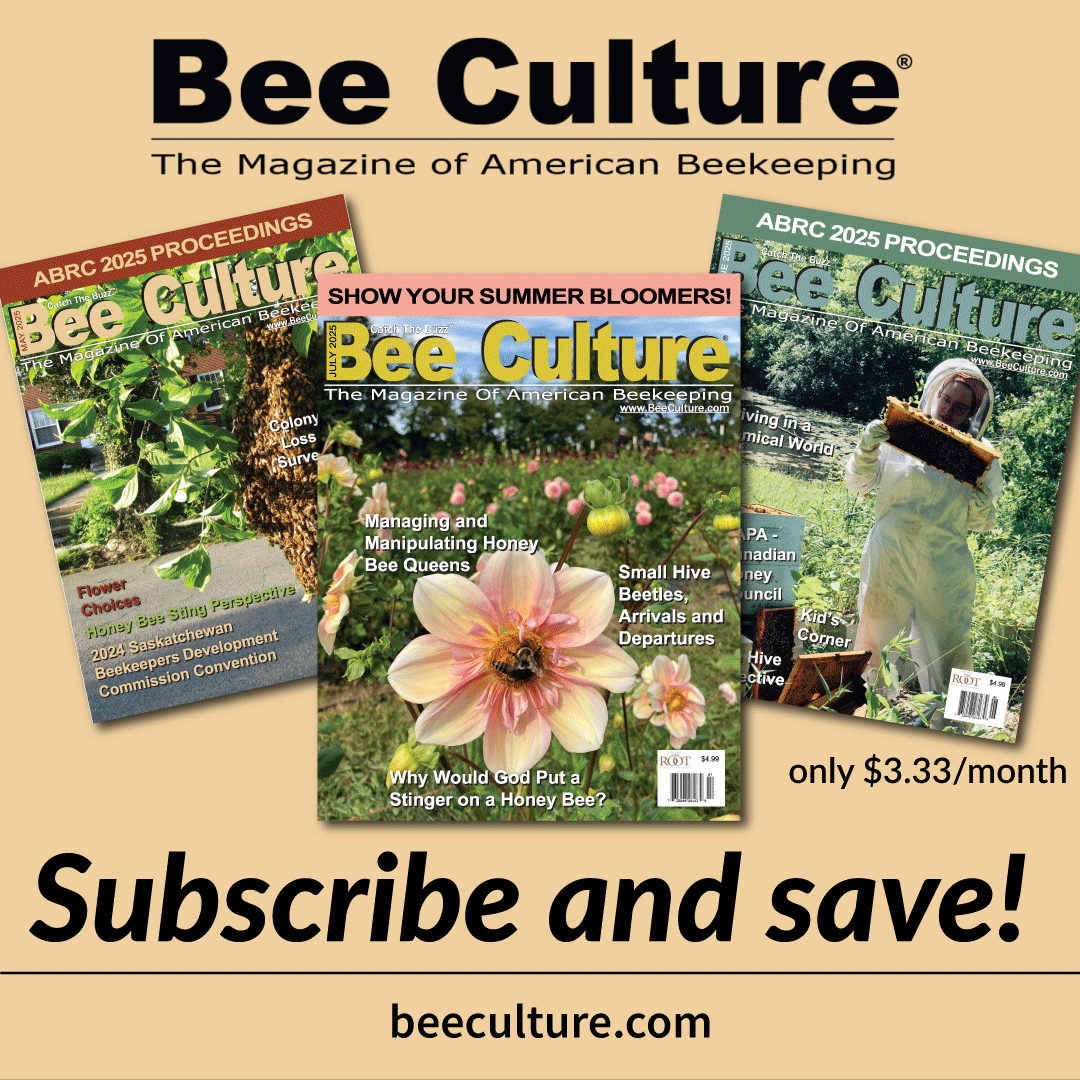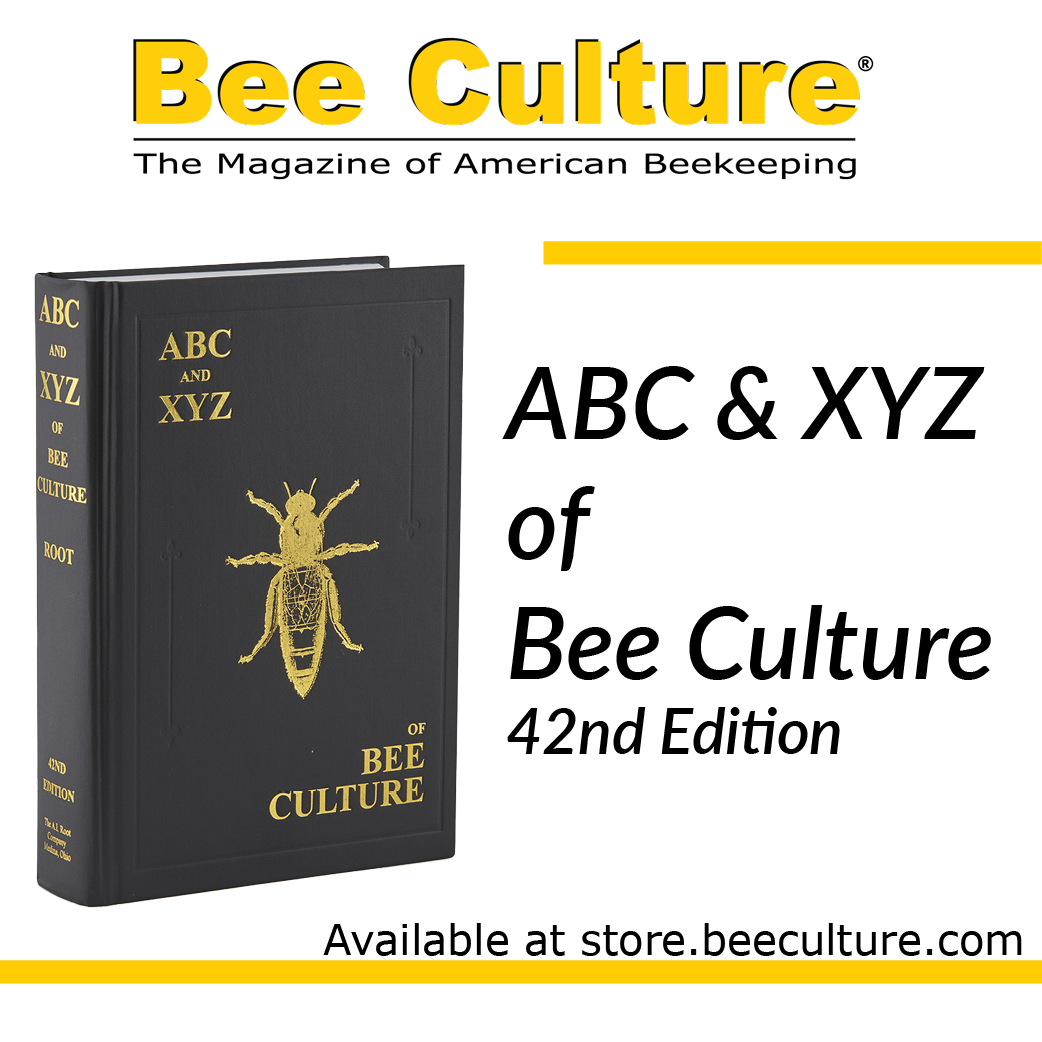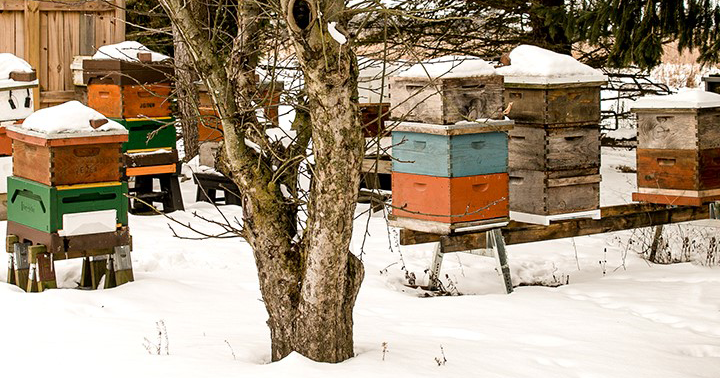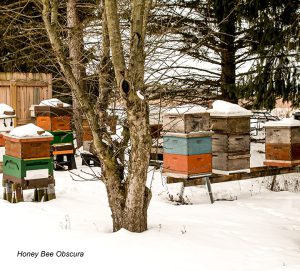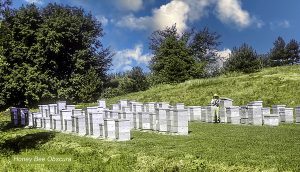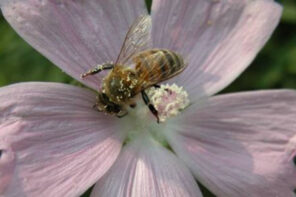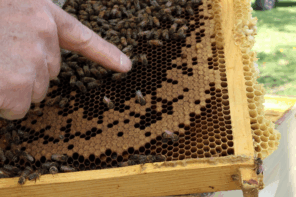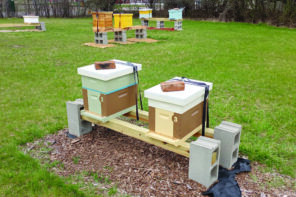Click Here if you listened. We’d love to know what you think. There is even a spot for feedback!
Read along below!
Some Common Principles of the Spring Management of Bee Colonies
Giving It Your Best Guess
By: James E. Tew
As I write for you, my Winter tally of Winter-killed colonies is still unknown, but I can predict that it will be disappointing. I can only blame myself. My colonies starved due to the minimal nectar flow last Spring and Fall. The cost of replacement bees will be significant and they will probably be a bit tedious to get. If ever management of my surviving colonies was important, it will be this Spring season.
Putting everything back on the table
We all give service to the important contribution that our bees make to agriculture and the environment – and they are valid, serious contributions. Strangely, much of that contribution is made by people who keep bees strictly for enjoyment, having no hope of financial gain for having kept bees. Ergo, beekeeping should be enjoyable and rewarding for all of us. Well, is it?
In our effort to make beekeeping productive and pleasant, beekeepers have a long history of dealing with bees and their concurrent problems. Some management schemes have been employed and then they have passed from favor. Others linger till today. I want to put all possible management factors back on beekeeping’s Management Table for discussion. Plus, I want to add some concepts that have not routinely been on the table before.
Events happening to our colonies in the Spring will affect them during the following Winter. Should we reconsider Winter-packing our colonies? Are any of you wintering your bees indoors? Is Winter feeding ever practical? True cold Winter feeding is nigh impossible. Can we still split, requeen, drug, and relocate bees thousands of miles away and still expect those colonies to automatically thrive – just because there are food sources available? How about nutrition – primarily trace elements and minerals. Any chance that bees are not always getting a balanced diet even though they are foraging on abundant floral sources? Should I be giving my bees a multi-complex vitamin supplement? Should I be prepared to feed supplemental pollen and sugar throughout the warm months? Will that contaminate my honey? Should I use chemicals more or use them less? How long can I reuse my combs? When all possible management schemes are considered, it fills a big discussion table.
“Beekeeper” management
All of us have varying beekeeper abilities and skills. I suggest that successful beehive management is a combination of experience, luck and “feel.” The contributions of experience and luck are obvious, but the “feel” characteristic is vague, but nonetheless real. Maybe” feel” (or intuition) is nothing more than specialized experience. When have you moved enough bees and brood to make a successful split? When it feels right. When does a colony have enough food stores to survive the upcoming Winter? When it feels right. That queen you just released on the comb – is she going to be okay? I feel like she will be. Like many other pursuits, beekeeping is begun as a craft and grows to become something akin to an art. Experience and good luck are critical components of a management system. The intuition component is last to show up and it comes along slowly and deliberately.
Just a few decades ago, a beekeeper could have considerably more colonies than he or she could manage. We all know the beehives close to home got more management than those in more distant yards, but in general all colonies were okay. Not today. Neglected colonies will soon be dead colonies. How many colonies should you have? I can’t answer that for you, but I know what my number is. As younger man, I commonly worked about 24-26 colonies per day. That’s not a lot. I know fulltime beekeepers can work hundreds per day, but that is not my life. I usually work bees alone. I load the truck with equipment. Smokers, fuel, matches, hive tools, mite chemicals, wash water, empty buckets, mobile phones – I alone, load it all. I fuel the truck up. I drive. I open the gate – and then I close the same gate behind me. I jockey the truck into the yard and I light the smoker – then the bee suit is put on. Before I ever open the first hive, I could justify a rest break.
Then heavy hives are broken apart and decisions are made. Robbing, drifting, crushed bees and aching backs, are all challenges. After a short lunch, it’s back to the beehives. By 3:00, I stumble more and am clearly tired. The quality of my late afternoon management probably does not equal the quality of my morning hive management. Then load it all up, leave the yard and, when back home, put it away. Then, for whatever reason, I can’t come out the next day. My schedule drags on. I can’t get back out for several days. Then when I can go out, it rains. I’ll do it later. Clearly, the last colonies to be managed get short shrift. As beekeepers you need to match your abilities with your skill level and your personal schedule to derive the number of hives you can manage properly.
Colony stress
Stress management is in vogue – both in our personal lives and in our beehives. Food availability, water availability, diseases, pests, high and low seasonal temperatures, opened hives, nearness of hives to one another, moving hives to new locations and time-honored pesticide exposures, are all common colony stressors. Whatever you do to manage your colonies should be more helpful than hurtful. Bees are NOT happy to have you invade their hive – even if they are calm.
Should we really have as many as thirty to forty colonies in one yard? Drifting and robbing are normal colony behaviors – right? Maybe not. Identical white colonies, sitting in neat rows, containing twenty perfect frames are our contrivances. Such high numbers of bee nests, stationed so closely, on abnormally straight combs, are not found in nature. How much stress is unintentionally caused by our efforts to make beekeeping more efficient for humans by putting bee colonies in aberrant situations? Sorry, but I don’t know, but I do know this – nothing can much more abnormal for beehives than being loaded onto the back of truck under a flight-restricting net and moved hundreds of miles.
But my stress reduction list is submitted for use in an ideal world. Obviously, we can’t get away from all stress and neither can our bees. As beekeepers, we should encourage good stress (e.g., a strong colony in a strong nectar flow) and help colonies deal with bad stress (e.g., a weak colony in a weak nectar flow). Some are wondering where I am going with this thought. Consider the real value of your management tasks, perform them, get out of the colony and then leave the colony alone. Every management task, in one way or the other, is stressful for the colony. I doubt that bees are ever happy to have us visit.
Quality time in the hive
Therefore, our time spent actually in the hive should be quality time. We know what we need to do and we should be prepared to do it. We should not just be tinkering and bumping around with the hive open and bees disrupted. Are we a bit like space shuttle pilots who train for years to take a 3-day flight? I suspect we as beekeepers should spend the majority of our time reading, talking and thinking about our bee management rather than actually delving into the hives, just to, “check things out.”
Management preparation
I suggest you prepare yourself in the following areas: (1) Disease and pest recognition, (2) Queen management, (3) Seasonal cycles (both bee and plant) and, (4) Biology (both bee and plant). Having a background in these common areas will imbue you with the ability to make informed and prompt decisions, thereby eliminating another hive-opening event the next day.
The primary decisions you will be making will pertain to: (1) hive space, (2) disease recognition and management, (3) need for supplemental feedstuffs, (4) the performance of your queen and what her future should be, and (4) the condition of your equipment. Maintaining your equipment and your yard will allow you to be prompter and more efficient when opening the hives.
Traditional Winter management schemes of reversing inner covers, providing for an upper entrance, reducing entrances, and checking for stores, are still obvious tasks needing to be done in the Fall and then undone in the Spring. Reversing the brood chambers in order to encourage your (ideally one-year old) queen to build a brood nest in both deeps is also still common-sense beehive management. This procedure is a major way to discourage swarming.
Swarm prevention – a personal change
Bluntly, to prevent swarming, keep young queens in your colonies and provide extra brood space before it is needed. If you see swarm cells, and sooner or later you will see some, make splits and hope for the best. Splitting a swarm-inclined colony may only lead to two swarms rather than one. Put swarm traps out. That’s a good use for old, retired equipment. Lastly, try to hive the swarms that issue. But here’s the change – I don’t think I will spend a minute specifically opening a colony to, “tear down queen cells.” I can’t say that I have ever truly stopped a single swarm from leaving by traumatizing a colony by destroying swarm cells. It is much, much better to attempt to stop swarming before it ever starts.
Drone management – a personal change
I was taught to destroy drone cells and to replace frames with high levels of drone cells. My current feeling is to stop harassing drones. A strong colony wants them, indeed, even needs them. We smash up drones, leaving the mayhem in the colony and on the ground around the colony. In the bright light of stress management, I don’t see how that really ever was helpful.
Crushed bees – a personal change
When you open a hive, inevitably some bees get crushed. Think about it. There are no emergency gurneys on which nurse bees can rush to save or remove crushed bees. To clear up the mess, house bees can only eat the smashed worker remains or cover them in wax and propolis. How much of a stressor are crushed workers and drones? I don’t know, but I don’t feel good about it anymore. Disease pathogens, as well as hormonal and pheromonal messages are released. Said the bees, “Oh, thank you for giving us more space, installing mite strips, leaving a caged queen, and killing five hundred of our comrades.” Clearly some bees are going to be killed in a hive opening event. It can’t be helped. Obviously, we should be careful.
Propolis – a personal change
If propolis was not a good thing, bees would not diligently produce it. From my perspective, it’s sticky and messy, and jams up my hives. From the bees’ perspective, it is a pathogen preventative, a putrefaction remedy, an entrance masker, and a general antibiotic. It even keeps seeds from germinating inside the hive. We, the beekeepers, should not badmouth propolis. It’s a good thing.
Chemicals – no change
Beekeepers are not good at using chemicals. The best chemical is only a short-term fix. We should use them, correctly, when we must, and then search for other ways to be helpful to the colony rather than dosing for life. Through the years, I too, have had colonies killed by mites. I, too, will use chemicals; therefore, I am not preaching. But ultimately, we don’t really know what any chemical really does to the morale and health of the colony. I know that I would not want to live in a vapor of peppermint oil. We only know that, short-term, something that looks good occurs – like controlled mites, suppressed foulbrood, or whacked wax moths. These results seem good. I think that, at the moment, they are good.
Traditional Winter/Spring Management Chores
1. Combine weak colonies
2. Equalize strong and less strong colonies
3. Provide space, including brood chamber reversal
4. Monitor/evaluate queen performance
5. Monitor mite populations and contagious diseases
6. Remove damaged or worn equipment, frames, and combs
7. Maintain the yard
8. Make splits, if needed
9. Position swarm traps and prepare for swarm acquisition
10. If needed, make changes in hive stands before supering
11. Freely feed pollen supplement and clean sugar syrup
12. Provide a dependable water supply
Non-invasive management
Sit by the front of your hive and watch for pollen or nectar collectors. Are there chalkbrood mummies in front of the hive? Any signs of raccoons or skunks? Those guys stress your hives and indicate that your hive stands need improvement. Does bee flight look good on a warm day? Smeared fecal matter on the hive tells you there has been some kind of digestive problem in the colony. Any drones? Are they healthy and active or undersized and lethargic? See any crawling bees with twisted wings? That’s a bad sign and a strong indicator of excessive Varroa populations. Clearly, you can tell a lot about the comings/goings of the colony without ripping into it. Plus, you don’t smell like smoke and you don’t get stung. Though I have never recommended this in a Spring management discussion, if you really want to frequently look at your bees, get an observation hive.
In a perfect management world?
In my perfect world, hives kept as far apart as possible, in a maintained yard – even having been painted with various contrasting paint colors. Queens are a year old and housed in hives that sit on stands that prevent night marauders from readily reaching the entrance. The hives are rarely opened, but when they are, carefully selected management tasks are performed quickly and efficiently. Wax combs are only a few years old. Space for future growth is provided long before it is needed. Chemicals are used judiciously. In this ideal world, diseases and pests are kept to a minimum. But most importantly, and by and large, the colonies are simply left alone. There is only so much I can do and be truly helpful. As much as I want to be involved in their lives, I must let bees do their own thing.
Thank you.
Thank you so much for reading to this point. I truly appreciate your time and creative energy.
Dr. James E. Tew
Emeritus Faculty, Entomology
The Ohio State University
tewbee2@gmail.com
Host, Honey Bee
Obscura Podcast
www.honeybeeobscura.com

